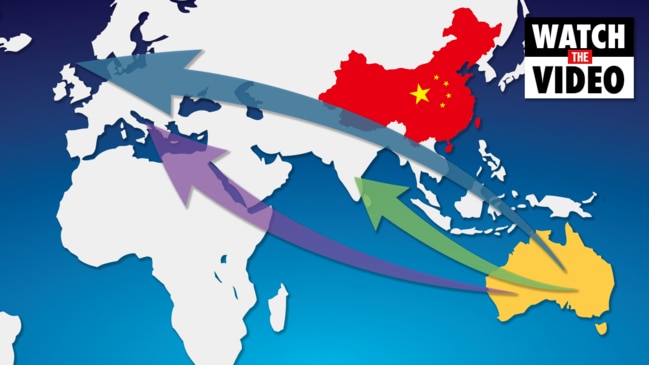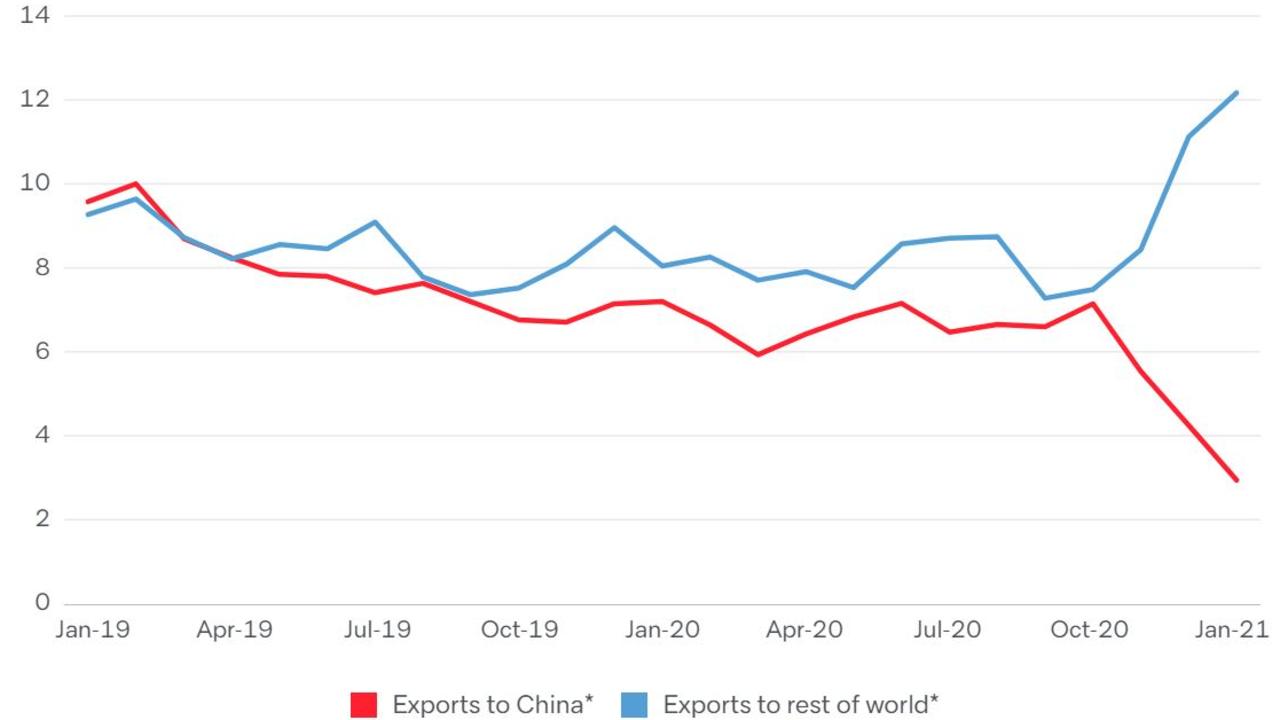China’s unofficial ban on Australian products fails to inflict significant damage
China’s unofficial ban against Australian products seems largely to have failed as exports to other countries soared instead.

The damage from China’s unofficial ban on Australian products has largely been offset as businesses find new overseas markets for their goods.
According to a report in the Lowy Institute’s TheInterpreter, the effect of China’s trade sanctions on Australia had been “completely swamped” by the booming iron ore trade.
“The total economic impact of China’s trade coercion against Australia seems to have been quite limited thus far,” author Lowy Institute chief economist Roland Rajah wrote.
He said only Australia’s wine industry had struggled to make up for its losses.
Total beef exports were also down but this is more of a reflection of supply issues after years of drought.
Last year China began blocking imports of Australian beef, coal and other products after Prime Minister Scott Morrison, with support from the United States, called for an inquiry into the origins of coronavirus.
Mr Rajah told The Australian that with the exception of wine, the net loss to Australian exporters as a result of the bans added up to less than $1 billion.
China trade bans fail to hurt Australian economy
Last year Australia’s merchandise exports to China were worth about $145 billion, which was just 2 per cent less than in 2019 despite the economic downturn caused by the pandemic.
Previously, exports of barley, beef, coal, copper, cotton, seafood, sugar, timber and wine to China were worth about $25 billion in 2019 – making up 1.3 per cent of GDP.
While this fell by a massive $20 billion last year, producers have manage to make up much of this shortfall.
For example, coal exports to China fell by $6 billion, but Australia’s exports to the rest of the world grew by $9.5 billion in annualised terms.
“Australian coal exporters seem to have been quite successful in diverting to other markets,” Mr Rajah wrote in the Interpreter.
RELATED: China bans Australian barley as trade war escalates

Exports other than coal held steady for most of the year before falling by about $4.5 billion late in 2020. This was mostly offset by a $4.2 billion increase to the rest of the world.
A bumper barley crop also helped partially make up for weakness in other areas.
“Limited damage shouldn’t be a surprise,” Mr Rajah noted.
“China has targeted products for which it thinks the cost to itself is relatively low, mostly because alternative suppliers exist.
“But, in most cases, that also means there are alternative buyers. And this reshuffling of global trade is precisely the reason the damage inflicted on Australia has been limited.”
RELATED: Australia finds new market for its barley

Australia not unscathed by trade war
However, this does not mean Australia emerged unscathed.
Mr Rajah points out exports would have been higher without the trade sanctions and the iron ore boom will eventually decline as China shifts away from its pandemic stimulus and Brazilian supply recovers.
The boost to coal exports is also being driven partly by pandemic stimulus, especially in India, although experts believe trade will rebound quickly to pre-COVID levels over the coming years.
However, China’s actions have also had repercussions for its own economy and citizens.
Last year Deloitte economist Chris Richardson said China’s trade war had effectively introduced a “fear tax” and had driven Australia’s iron ore prices higher.
“Iron ore prices are close to the peak prices we saw during the mining boom, which is remarkable considering economic conditions and the fact that China’s economy is not as strong as it was,” Mr Richardson told news.com.au in December.
Mr Richardson said the trade war may actually have sent prices higher because businesses were worried Beijing would act against iron ore – even though it is unlikely to do this – so speculators and steel mills in China had been buying up the resource in case a ban came down and they had to find other more expensive sources of iron ore.
China’s ban on Australian coal also had repercussions for its own citizens with reports that dozens of Chinese cities and at least four provinces asked residents and businesses to cut back on how much power they use.
charis.chang@news.com.au | @charischang2




